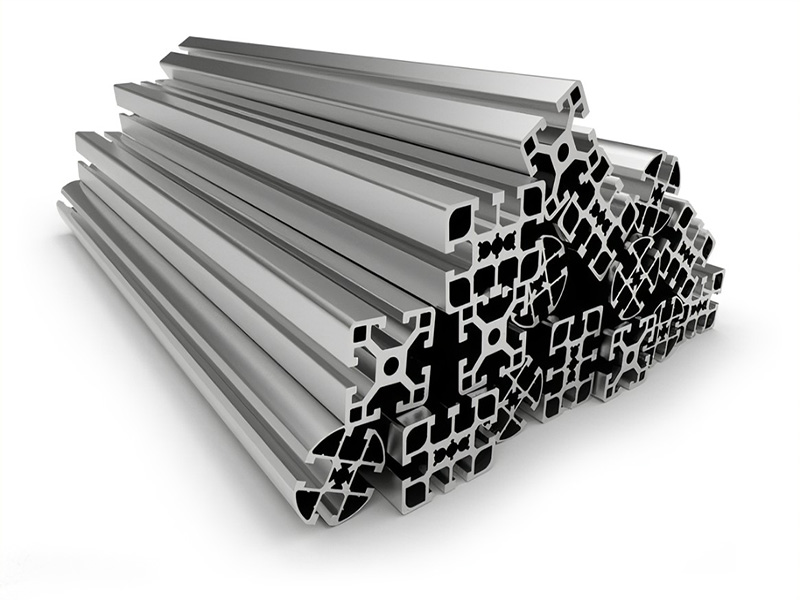Did you know that 75% to 80% of modern aircraft are made of aluminum?
The history of aluminum in aerospace industry can be traced back to a long time ago. In fact, aluminum was used in aviation before the invention of aircraft. At the end of the 19th century, count Ferdinand Zeppelin made the frame of his famous Zeppelin airship out of aluminum.
Aluminum is an ideal material for aircraft manufacturing because of its light weight and high strength. Aluminum weighs about one-third as much as steel, which allows aircraft to carry more weight or become more fuel-efficient. In addition, the high corrosion resistance of aluminum ensures the safety of aircraft and passengers.
2024 – commonly used in aircraft casings, fairings, aircraft structures. Also used for repair and recovery.
3003 – this aluminum plate is widely used in fairing and baffle plating.
5052 – commonly used in the manufacture of fuel tanks. 5052 has excellent corrosion resistance (especially in marine applications).
6061 – generally used for the end use of aircraft landing pads and many other non aeronautical structures.
7075 – commonly used to strengthen aircraft structures. 7075 is a high-strength alloy, which is one of the most commonly used grades in the aviation industry (second only to 2024).

On December 17, 1903, the Wright brothers completed the world’s first human flight with their plane “Wright Flyer”.
At that time, the automobile engine was too heavy to provide enough power to take off, so the Wright brothers made a special engine, in which the cylinder and other parts were made of aluminum.
Since aluminum is not widely available and expensive, the aircraft itself is made of Sitka spruce and bamboo frames covered with canvas. Due to the aircraft’s low flight speed and limited lift generation capacity, it is necessary to keep the fuselage very light. Wood is the only feasible material, light enough to fly, but strong enough to bear the required load.
It will take more than ten years to make aluminum more widely used.

Wooden aircraft left its mark in the early stage of aviation manufacturing, but during the first World War, light aluminum began to replace wood as a basic component of aviation manufacturing.
In 1915, German aircraft designer Hugo Juncker built the world’s first all metal aircraft; Juncker j 1 monoplane. Its fuselage is made of an aluminum alloy including copper, magnesium and manganese.
The period between World War I and World War II is called the golden age of aviation
In the 1920s, Americans and Europeans participated in aircraft competitions, which led to innovation in design and performance. The biplane was replaced by a more streamlined monoplane, and the aircraft frame was also transformed to an all metal frame made of aluminum alloy.
EAA_ Ford_ Trimotor
Tin goose
In 1925, Ford Motor Company entered the aviation industry. Henry Ford designed the 4-At, which is a three engine all metal aircraft using corrugated aluminum. The plane, known as the “tin goose”, was immediately welcomed by passengers and airlines.
By the mid-1930s, a new streamlined aircraft shape appeared, which had closed multi engine, retractable landing gear, variable pitch propeller and aluminum structure of stress shell.
During the Second World War, many military applications required aluminum, especially the construction of aircraft frames, which led to a surge in aluminum production.
The demand for aluminum was so great that in 1942, the wort – NYC radio program “aluminum for defense” encouraged Americans to contribute scrap aluminum to the war. Recycling of aluminum is encouraged. The “tin foil driven” activity provides free movie tickets in exchange for aluminum foil balls.
From July 1940 to August 1945, the United States produced a staggering 296000 aircraft. More than half of them are mainly made of aluminum. The U.S. aviation industry can meet the needs of the U.S. military and U.S. allies including Britain. At its peak in 1944, American aircraft manufacturers produced 11 aircraft per hour.
At the end of the war, the United States had the most powerful air force in the world.

Since the end of World War II, aluminum has become an indispensable part of aircraft manufacturing. Although the composition of aluminum alloy has been improved, the advantages of aluminum remain unchanged. Aluminum allows designers to build aircraft that are as light as possible, can carry heavy loads, use the least fuel, and do not rust.
British_ Airways_ Concorde_ G-boac_ 03
Concorde
Aluminum is everywhere in modern aircraft manufacturing. For 27 years, Concorde has been flying at more than twice the speed of sound. Its fuselage is made of aluminum.
Boeing 737 is the best-selling commercial jetliner, which makes the air travel of the public a reality. 80% of its material is aluminum.
Today’s aircraft use aluminum in the fuselage, wing glass, rudder, exhaust pipe, hatch and floor, seats, engine turbine and cockpit instruments.
Aluminum is invaluable not only in aircraft, but also in spacecraft. On spacecraft, the combination of low weight and maximum strength is more important. In 1957, the Soviet Union launched Sputnik 1, the first man-made satellite made of aluminum alloy.
Skylab_ And_ Earth_ Limb__ GPN – 2000 – 001055
Skylab space station
All modern spacecraft are made of 50 to 90 percent aluminum alloy. Aluminum alloy has been widely used in Apollo spacecraft, Skylab space station, space shuttle and international space station.
The Orion spacecraft currently under development aims to allow humans to explore asteroids and Mars. The manufacturer Lockheed Martin selected aluminum lithium alloy for the main structural components of Orion.

For Further Details,Please Feel Free To Contact Us: